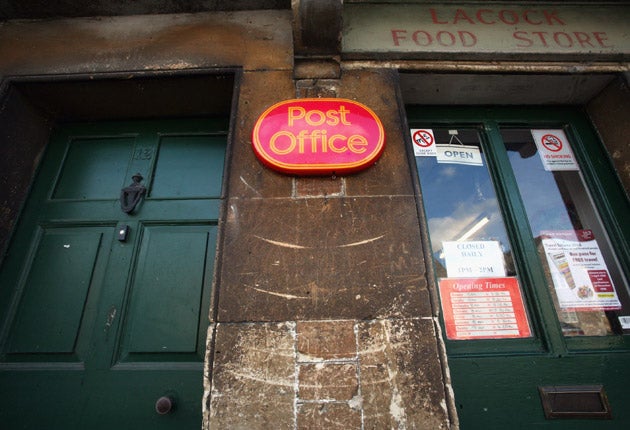Providers come out fighting over loan rates
After years of offering customers similar high interest charges, lenders are at last becoming more competitive. Chiara Cavaglieri reports

Your support helps us to tell the story
From reproductive rights to climate change to Big Tech, The Independent is on the ground when the story is developing. Whether it's investigating the financials of Elon Musk's pro-Trump PAC or producing our latest documentary, 'The A Word', which shines a light on the American women fighting for reproductive rights, we know how important it is to parse out the facts from the messaging.
At such a critical moment in US history, we need reporters on the ground. Your donation allows us to keep sending journalists to speak to both sides of the story.
The Independent is trusted by Americans across the entire political spectrum. And unlike many other quality news outlets, we choose not to lock Americans out of our reporting and analysis with paywalls. We believe quality journalism should be available to everyone, paid for by those who can afford it.
Your support makes all the difference.After three years in the post-credit-crunch doldrums, the personal-loan market is beginning to show signs of a price war.
Lenders have long been fighting to offer the best loans rates for the £7,500 and £14,999 tier but this week, Sainsbury's Finance slashed rates for loans of between £5,000 and £7,499 by 0.2 per cent.
The deals are available only to Nectar cardholders, who will also benefit from double Nectar points for two years. Loans with terms of one to three years have been reduced from 8.4 per cent to 8.2 per cent, while those running for four to five years have fallen from 8.5 per cent to 8.3 per cent.
"The reduction by Sainsbury's was to counteract a move by The Post Office, at the end of last week, which saw it reducing rates on the same tier by 0.5 per cent to 8.4 per cent," said Michelle Slade from the financial comparison site Moneyfacts.co.uk.
The Post Office also reduced rates on the higher £7,500 to £14,999 tier by 1.5 per cent to 7.4 per cent and on the £15,000 to £25,000 tier by 0.5 per cent to 8.4 per cent.
In contrast, smaller loans of between £2,000 and £4,999 saw their rate increase by 1 per cent to 14.9 per cent, but this still left the Post Office offering the best deal.
Loans in the £7,500 tier have been falling since the beginning of the year, with providers such as Sainsbury's Finance, Tesco Bank, Nationwide, Post Office, First Direct and HSBC battling it out at the top of the best-buy tables.
M&S Money has claimed the top spot offering 6.9 per cent – the lowest personal-loan rate since June 2008 – which has forced the hand of providers elsewhere.
"It could be that Sainsbury's Finance and the Post Office have decided to look at being more competitive in other tiers rather than continuing to fight it out in the £7,500 tier," Ms Slade said.
Today's rates still represent a much higher margin over the Bank of England base rate than was typical before the credit crunch. In September 2007, Alliance & Leicester launched a 6.3 per cent loan for the £7,500 to £14,999 tier, at a time when the base rate was 5.75 per cent.
After the run on Northern Rock, prices went up, despite the base rate being lowered to 0.5 per cent. The cheapest loan in September 2009 came from Nationwide at 7.7 per cent, although this was only available for existing customers.
"If we jump to September 2010, we had Sainsbury's Bank, Tesco Bank and Alliance & Leicester all at the top of the best buys offering 7.7 per cent.
"That was the start of the price war really as rates moved downwards from the top providers into the new year when A&L & Santander were offering 7.3 per cent," says Chris Griffiths at comparison site Confused.com.
These moves could show that lenders are finally passing on the benefit of a lower base rate and reduced credit risk, but experts say it is just as likely that banks are reacting to new rules that came into effect in February.
Specifically, one of the changes introduced in the EU's Consumer Credit Directive means that the Representative APRs (annual percentage rates) now have to be offered to only 51 per cent of accepted applicants, whereas before the Typical APR had to be offered to two out of three people.
"Customers should check to see if the lender does operate with risk-based pricing before they apply if they haven't got a strong credit profile, as they may be offered the loan but with a higher rate of interest," warns Mr Griffiths.
Join our commenting forum
Join thought-provoking conversations, follow other Independent readers and see their replies
Comments